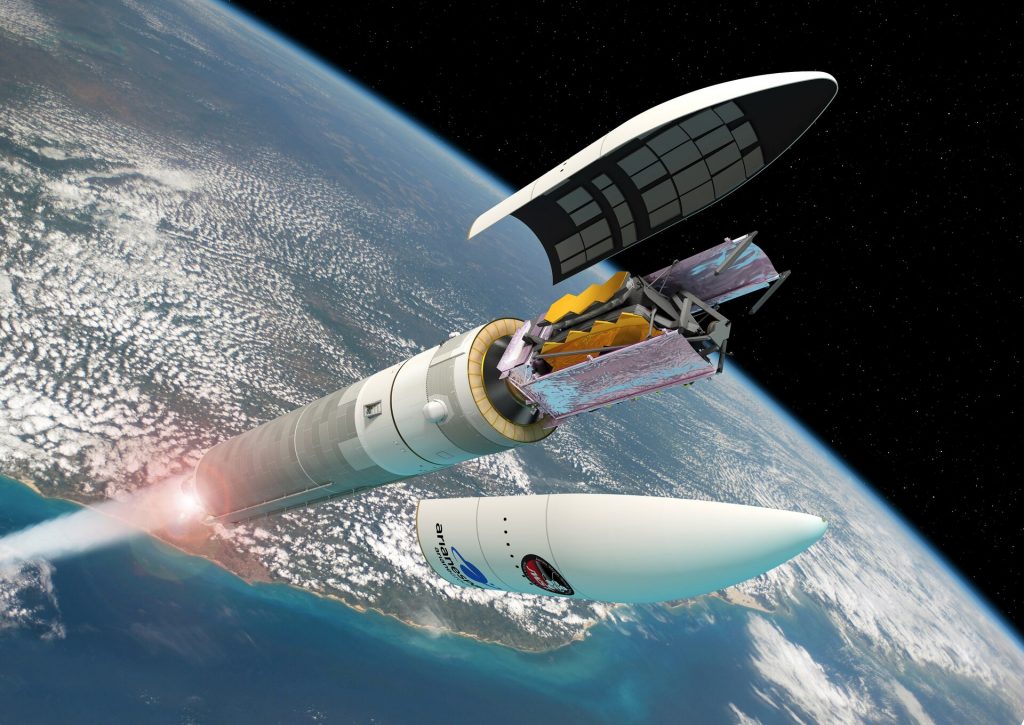
#James webb telescope launch full
It is hoped that Webb will be able to see into a mysterious time known as the Epoch of Reionisation as the universe changed from being full of opaque gases into its current transparent form. As the universe expands, visible light from the earliest stars is stretched through a phenomenon known as redshifting into the infrared spectrum. Particles in their atmosphere obscure the ways in which scientists infer the make-up of these sub-Neptunes, but infrared should be able to peer through the haze.Īnother reason to focus on infrared light is to look further back into the past than ever before. Sub-Neptunes are smaller than the eponymous planet, but orbit very close to their stars.

While most stars have the exoplanets, called sub-Neptunes, in orbit around them, there are none in our solar system. One task using these sensors will have is investigating the make-up of the most common planets in the galaxy. Rather than looking at extra-terrestrial insects, however, the telescope will focus on specific parts of the infrared spectrum that are less absorbed by dust and other particles, allowing scientists to look through dense clouds and atmospheres. NASA says that the sensors are so sensitive it could detect the heat signature of a bumblebee at almost 400,000 kilometres away. The Webb telescope is designed to view the world in infrared, as opposed to the visible and ultraviolet focus of Hubble. In about six months' time, after arriving at its new home and being set up, Webb will be ready to start looking into the farthest reaches of the universe. The new telescope will travel 1.6 million kilometres from our planet into a Lagrange point, where the Earth and the Sun's gravity, along with its orbital momentum, will help keep it in one place without using up much fuel. Webb will also go much further from Earth than Hubble. To account for this, a sunshield the size of a tennis court will also unfold to block out the Sun's rays and keep the telescope cool while a solar panel behind it will generate electricity. The collapsible design, however, means the mirror is left open to space where sunlight would obscure its observations if left unchecked. These will fold so that it can be launched in a conventional rocket and can adjust itself as instructed in space. With Webb, they will have a mirror around 6.5 metres in diameter, made of 18 individual segments.

While Hubble's mirror, at 2.4 metres, is big, scientists wanted to create an even larger telescope. The larger the mirror, the more likely that even the faintest traces of distant galaxies and other space objects will be detected.
/cdn.vox-cdn.com/uploads/chorus_image/image/59175845/jwst_mirror.0.jpg)
One particular limitation of Hubble was that it was designed to fit inside the head of a rocket, restricting its size.Ī larger mirror allows greater amounts of light to be gathered and focused in the telescope. After issues with its lens were corrected, the telescope gave scientists some of the most spectacular images of the cosmos.Įven before Hubble was launched, scientists were discussing what would come next for space observation. Perhaps the most famous space telescope is Hubble, which launched in 1990.

The first were launched in the late 1960s and early 1970s, aiming to capture images of the universe without Earth's atmosphere in the way. Hopefully - and I have had this conversation with others - in five years, Greg Robinson will just be a common name leading programs around NASA.Space telescopes are satellites pointed into space and designed to collect types of radiation including light, X-rays and infrared. When you can't answer that question, and I have been around NASA 33 years, I think you got the answer, right? So, I think that's something we really need to work on. And I was doing a program with Howard University, one of my alma maters, a year, a year-and-a-half ago, and the question came up, are you the first African American to lead a major program in NASA?Īnd I had my comms team with me. And - but I can honestly say, I believe mine has been a lot less than others, not to make it better, because it's still not a good thing. There are times that I have felt resistance to advancement, and certainly to lead certain - different parts of the organization, what I call the major parts, and certainly major flight programs or flight projects.


 0 kommentar(er)
0 kommentar(er)
